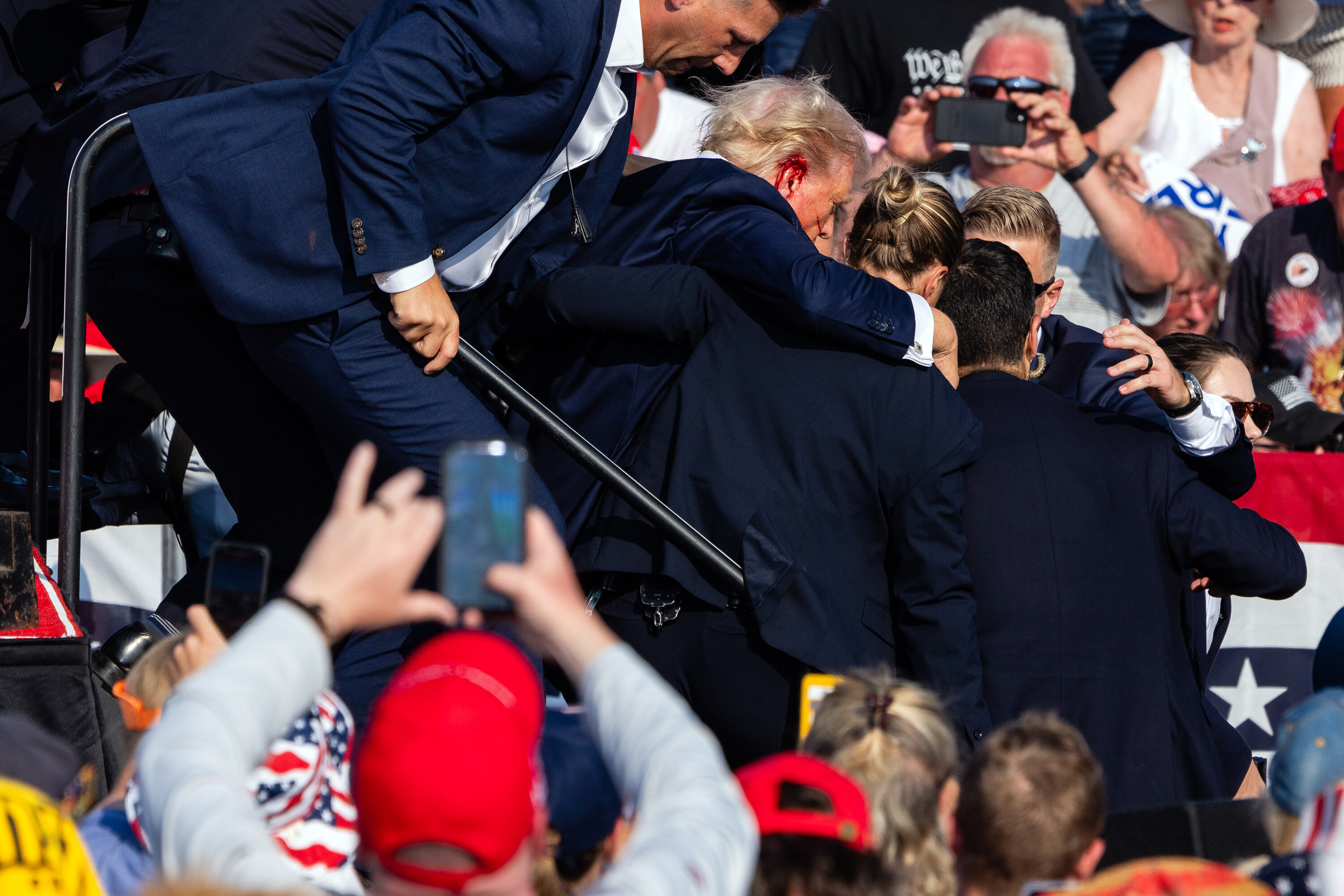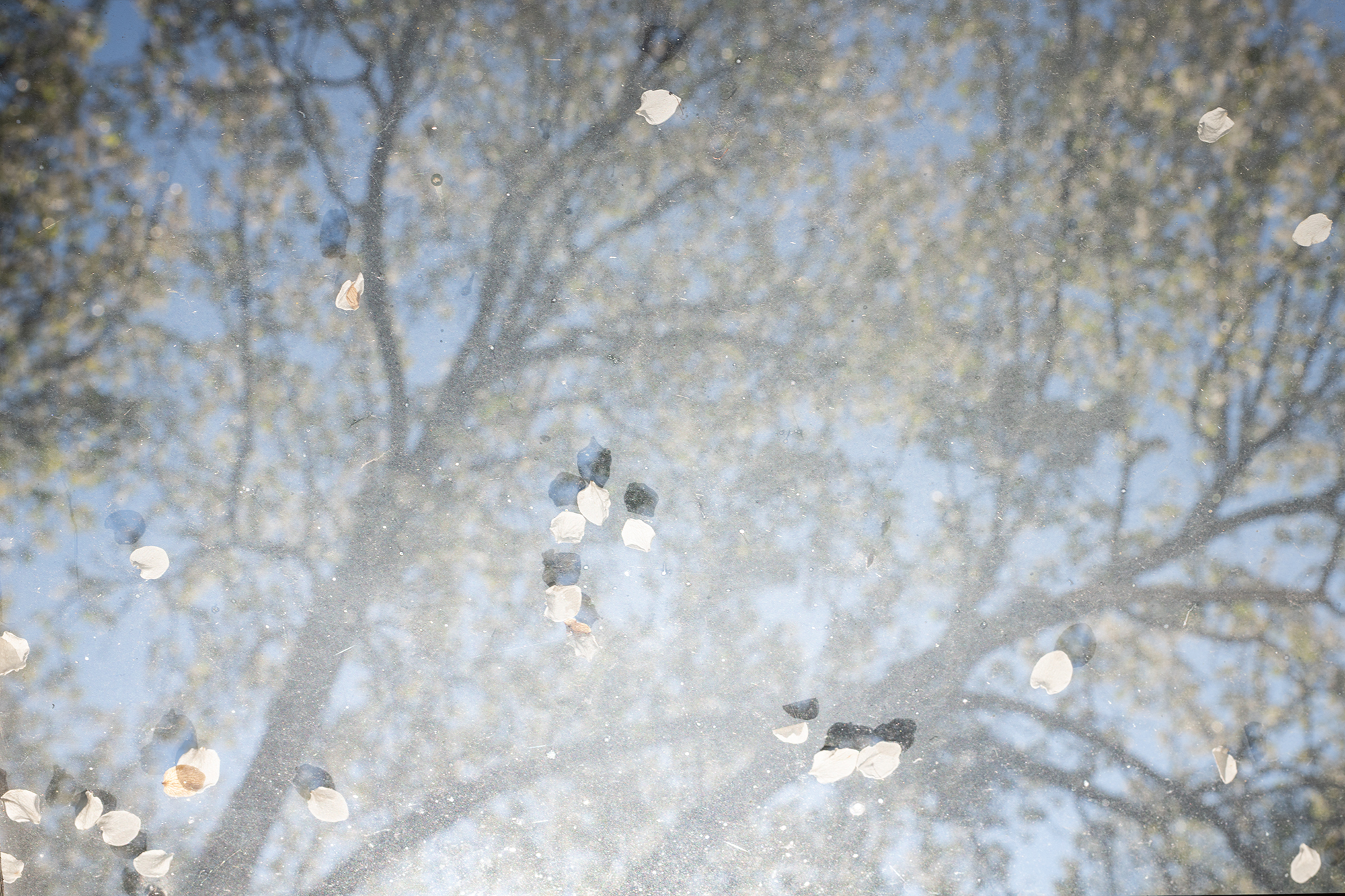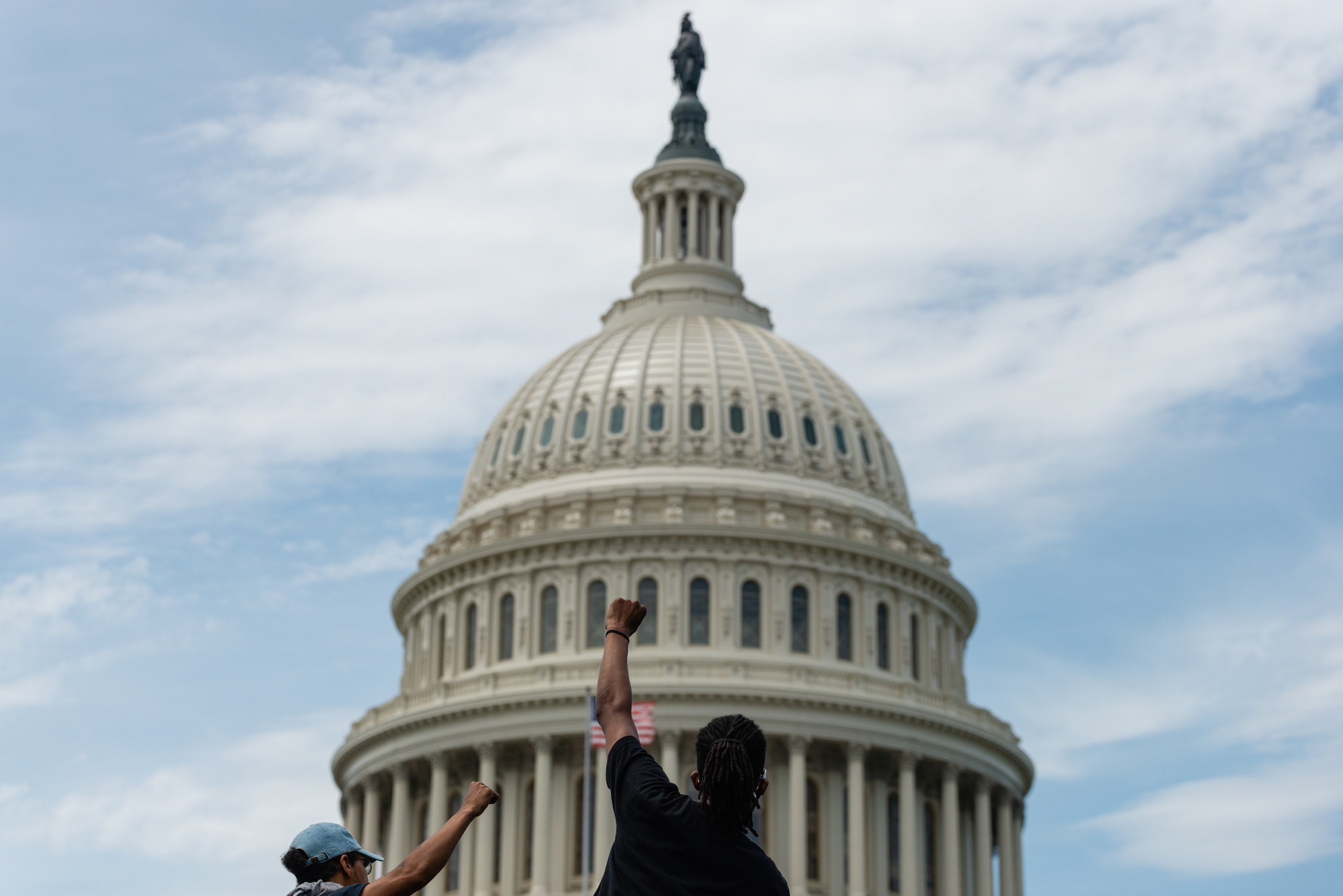On July 13, George Washington University alumnus Eric Lee, M.A. ’20, found himself on a media riser facing the stage where former President Donald Trump was holding a campaign rally on the grounds of the Butler Farm Show in rural Pennsylvania. Lee, a graduate of the Corcoran School of the Arts and Design’s new media photojournalism master’s program, was on assignment for The New York Times, photographing a stump speech that seemed run-of-the-mill—until it was anything but.
Shots rang out from a nearby rooftop, with one bullet grazing Trump in his right ear. A rallygoer died, and two others were critically injured before Secret Service ultimately shot and killed the assailant.
It was 20 seconds of chaos that will be forever remembered in U.S. history, and Lee, who joined the Times in June as a D.C.-based photo fellow, documented it all through his Sony A1 camera.
And two days later, Lee was aboard Air Force One as a member of the press corps joining President Joe Biden on a campaign tour in Nevada.
Life never slows down in the world of news, especially during a presidential election cycle, and the story of the day can change at a moment’s notice. Lee is well trained in adaptivity after photographing events such as the racial injustice and police brutality protests, COVID-19 and January 6. He spoke to GW Today about his harrowing experience photographing Trump’s assassination attempt, how he stays prepared in case the story pivots and how iconic photos can define a moment.
Q: First and foremost, we are glad you are OK and safe after what happened. What was your experience like when things turned chaotic? How did you balance keeping yourself safe while still doing your job?
EL: At first it sounded like it could be fireworks, so it wasn’t immediately clear it was gunshots. I saw the TV camera operators duck and the Secret Service move into action. I quickly heard screaming. I saw police raise their guns and heard more screaming, and I just took cover for a brief moment. But it was after a few deep breaths that I thought ‘this is history unfolding and we need to have photos.’ So, I just took as many photos as I could in that moment, just following as Trump was getting escorted off. I have a responsibility to photograph the scene and the aftermath and the events as they unfold.
Everything moved so quickly that I didn’t really know what exactly had happened–I was pretty far away from the stage and had to use a 400-millimeter lens. Because I was using a Sony A1, and those files are so big and have so much detail, I have to crop in to make a cleaner image. So, it was only after as Trump was driving away that I looked through my viewfinder and was able to zoom in, and I saw that streak across his face. I was like ‘is that blood?’ And as I kept looking through, I realized that ‘yeah, that is blood from his ear.’ All the small details started to become a lot larger.
Q: As you experienced at the rally, you just never know when what can seem like a standard event can turn into something so much more. How do you prepare for such a moment as a photojournalist, where in an instant what is happening in front of you will be etched in history forever?
EL: I think the first that comes to mind is that photojournalists are very adaptable. You must be able to change course quickly. From a mental and physical standpoint, it’s the small things like leaving your cameras on, making sure your exposure is always set, making sure you have space in your memory cards, making sure your settings are there for drive mode and stuff like that. But I don't think anyone can really be prepared for an assassination attempt. At the time I didn’t really know where the shooter was coming from or if there were multiple shooters. We didn’t know if there were explosives involved. It’s tough being in those environments, but it goes back to being adaptable and being creative with limitations. I was in a fixed position on the riser, so I just knew that I had to get as many variations as I could staying where I was.
Q: It’s often said that journalism is the first rough draft of history, and this election is shaping up to have historical implications. You were with Trump in Pennsylvania [on July 13]. Two days later you were with Biden on the West Coast. What is it like to be documenting this chapter in American history?
EL: It’s a surreal feeling. It’s amazing to be on that front line seeing the words spoken and the immediate reactions. You just really have a front seat to history this way, and it’s a job that I cherish.
Q: More broadly, how do iconic photos define specific moments in time? Are there photographs or snapshots from history that you draw inspiration from or think are exceptionally powerful at telling the story?
EL: If you ever think back about historical moments in history, you think of those iconic photographs. For me, I grew up in New York City, so on 9/11 I think of the iconic Falling Man photo, which is really hard to bear witness to. In Vietnam, there's the napalm girl. These tragic events are hard to get out of your mind. Thinking more positively, and recently, there’s Ketanji Brown Jackson’s confirmation and judiciary hearing. The reaction of her daughter looking at her made that a great photograph.
I don’t think we know what an iconic image is until well after it’s been made. As we live in an age where information comes so quickly, there’s an important separation between iconic and viral. We as photographers really have to make sure we are giving context to the moment to educate the world.
Q: What are some skills that you learned in your new media photojournalism program in the Corcoran School of Art and Design that have helped you in the field, especially as you cover high profile events such as presidential campaigns?
EL: There are so many technical things I learned at the Corcoran, from making photographers and telling a story with a single photograph to, which is especially helpful now, thinking about how these images will live in print. How will colors bleed into pages? How will framing and composition work well for readers? But aside from those technical skills, there’s learning how to think on your feet and to be a creative problem solver, and the new media photojournalism program has all those different elements. Whether it’s an audio, video or photography class, it’s about using all those tools we have at our disposal to tell narratives effectively and creatively. So, for me right now, it’s thinking about how I can make a campaign event or White House event a little bit different so that these images and these stories stand out to become fresh for readers, viewers and audiences.
One of the first pillars of photojournalism is the role of ethics in how we make and share photographs. With the rise of A.I. and access to photo manipulating tools, truth and integrity of the visuals we digest are becoming more and more important. Because I learned from such great teachers who have deep experience across journalism of all mediums, I make sure to incorporate these lessons into every picture I make.





